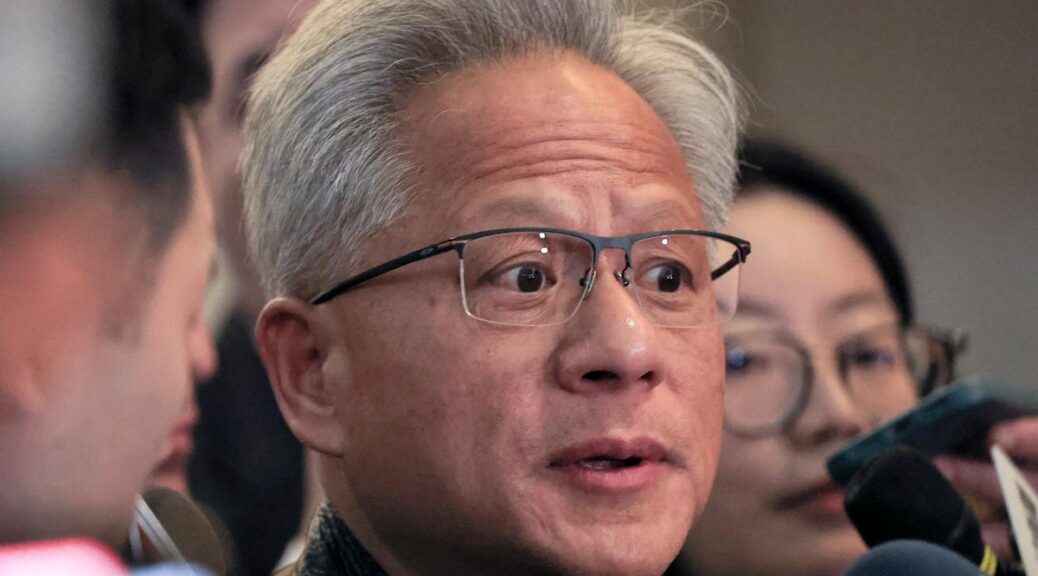
Nvidia Meets Trump Amid AI Trade Tensions: What It Means for the Semiconductor Industry
Nvidia Meets Trump Amid AI Trade Tensions
Nvidia CEO Jensen Huang met with President Donald Trump amid rising AI trade tensions and semiconductor tariffs. Learn how this impacts Nvidia, China, and the global AI industry.
Nvidia Meets Trump Amid AI Trade Tensions
In a high-stakes meeting that underscores the growing tensions in the global AI and semiconductor industries, Nvidia CEO Jensen Huang met with President Donald Trump on Friday. The meeting comes as Nvidia faces mounting challenges, including fierce competition with China, potential tariffs on semiconductors, and a significant drop in its stock value following breakthroughs by Chinese AI startup DeepSeek.
The Tariff Threat and Nvidia’s Struggles
President Trump announced plans to impose tariffs on imported computer chips, a move that could severely impact Nvidia’s business model. The company relies heavily on imported components, primarily from Taiwan, to manufacture its cutting-edge semiconductors.
“The meeting was productive, but in the end, we will impose tariffs on semiconductor imports,” Trump shared with reporters following the discussion.
This statement has sent ripples through the tech industry, as tariffs could increase costs for Nvidia and other semiconductor companies, potentially slowing innovation and raising prices for consumers.
US Export Restrictions and China’s AI Advancements
Nvidia’s high-end chips, such as the H100, are already subject to US export restrictions aimed at limiting China’s access to advanced AI technology. These restrictions are part of Washington’s broader strategy to curb China’s progress in strategic technologies.
However, the effectiveness of these policies has been called into question following a major breakthrough by Chinese AI startup DeepSeek. Despite being cut off from Nvidia’s export-blocked chips, DeepSeek successfully developed and widely adopted its latest AI model. This achievement not only highlights China’s growing self-reliance in AI but also triggered a massive sell-off of Nvidia’s stock.
On Monday, Nvidia’s market value plummeted by nearly $600 billion—the largest single-day loss in Wall Street history. This dramatic drop reflects investor concerns about Nvidia’s ability to maintain its dominance in the face of rising competition and geopolitical challenges.
Nvidia’s Response and the Path Forward
In a statement, a spokesperson for Nvidia expressed, We were grateful for the chance to meet with President Trump and exchange ideas on semiconductor and AI policies.
During their conversation, Jensen and the president emphasized the critical need to bolster America’s technological edge and maintain its leadership in artificial intelligence.
The meeting highlights Nvidia’s efforts to navigate the complex landscape of trade policies and geopolitical tensions. As one of the world’s most valuable companies, Nvidia has been at the forefront of the AI revolution, powering everything from data centers to autonomous vehicles. However, the company now faces the dual challenge of adapting to new trade restrictions while maintaining its competitive edge.
The Bigger Picture: AI, Trade, and Global Competition
The Nvidia-Trump meeting is a microcosm of the broader struggle for dominance in the AI and semiconductor industries. As the US seeks to protect its technological leadership, China is rapidly advancing its capabilities, often through innovative workarounds like DeepSeek’s latest model.
This competition has far-reaching implications, not just for Nvidia but for the entire global tech ecosystem. Tariffs, export restrictions, and geopolitical tensions could reshape supply chains, drive up costs, and accelerate the race for self-sufficiency in critical technologies.What’s Next for Nvidia and the Semiconductor Industry?
As Nvidia grapples with these challenges, the company’s ability to adapt will be crucial. Key areas to watch include:
- Innovation: Can Nvidia develop new technologies or partnerships to mitigate the impact of tariffs and export restrictions?
- Global Strategy: How will Nvidia balance its reliance on international supply chains with the need to comply with US trade policies?
- Market Competition: Will DeepSeek’s success inspire other Chinese startups to bypass US restrictions, further intensifying competition?
For now, the meeting between Jensen Huang and President Trump signals Nvidia’s commitment to engaging with policymakers and shaping the future of AI and semiconductor trade. However, the road ahead is fraught with uncertainty, and the stakes have never been higher.



